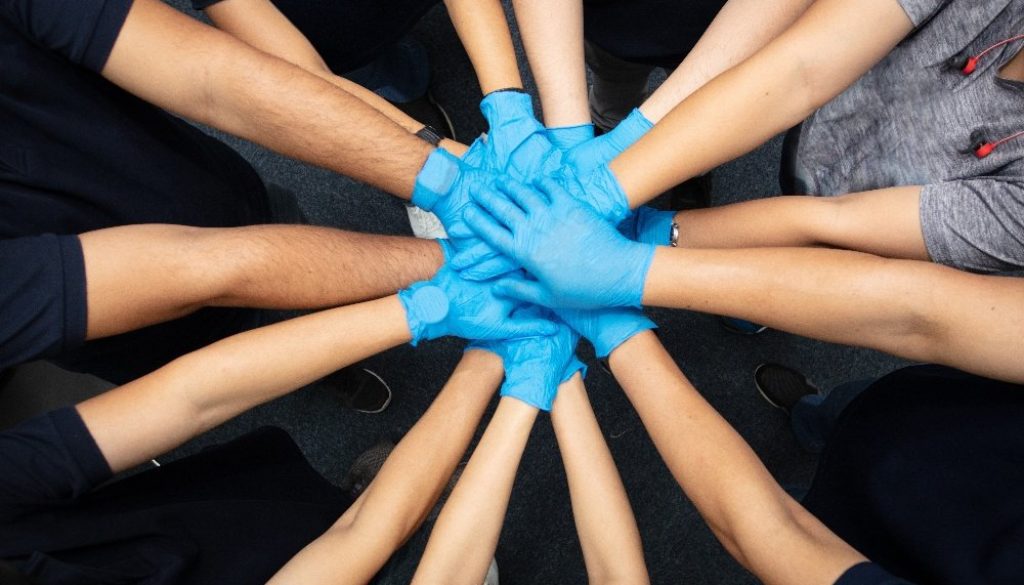What are Strike Teams and how do they Minimize COVID-19 Hot Spots in Communities?
Most states have rapid response units tasked with responding to community outbreaks of COVID-19 and minimizing the impact of the virus. While not all rapid response units are assigned the title of “strike team”, they all do much the same thing – albeit on different scales.
The term “strike team” is often used in the context of describing efforts to curb the spread of COVID-19, but rarely is it used consistently. While some states may have multiple strike teams tasked with different roles, others may have multiple strike teams tasked with different elements of the same role. Furthermore, some states refer to their rapid response units as task forces or COVID SWAT teams, or don’t assign any name to them at all.
Yet rapid response units/strike teams/task forces/COVID SWAT teams have important roles to play in curbing the spread of COVID-19, and how well they fulfill these roles can have a significant impact on the health and economic wellbeing of communities. However, in the same way as the term “strike team” is used inconsistently, the roles of rapid response units are also inconsistent and can often depend on the type of community in which an outbreak is detected and the state in which it is located.
Variations in the Roles of Rapid Response Units
In July, the Centers for Medicare and Medicaid Services (CMS) published a “Toolkit on State Actions to Mitigate COVID-19 Prevalence in Nursing Homes”. Within the toolkit, there is a list of sixteen states plus the District of Columbia that have dedicated infection control strike teams for minimizing COVID-19 hotspots in nursing home communities. Even within this small (and incomplete) sample, there are wide variations in the roles of rapid response units. For example:
- In Idaho, the state has formed a “strike team” (or what most people would call a committee) to “address the challenges associated with protecting Idaho’s aged population from exposure to the coronavirus”.
- In New Mexico – according to CMS – the state’s “strike team” has implemented enhanced respiratory surveillance in long term care facilities in order to rapidly identify potential outbreaks of COVID-19.
- In North Dakota, a Hospital Coordination and Vulnerable Population Protection Plan was drafted at the outbreak of the pandemic, and put into action by the state rapid response unit following an asymptomatic positive test at Valley Senior Living in Grand Forks.
- Ohio has been even more proactive in its responses to COVID-19 hotspots in nursing home communities. The state has set up a regional rapid testing program, healthcare isolation centers for residents who test positive, and both preventative and treatment strike teams.
Beyond nursing home communities, few states are currently in a position to justify community-wide rapid response units to minimize the impact of COVID-19 hot spots. Although the latest data from the Centers for Disease Control and Prevention indicate an overall stabilization of the infection rate, the COVID-19 coronavirus is still too widespread in most jurisdictions for track and trace operations to be effective. However, some states are trying.
California COVID-19 Strike Team Reduces Infection Rate by Almost 65%
One of earliest strike team success stories occurred in Imperial County, California; where, in early July, the two-week average number of cases per 100,000 residents was 836. At the time the statewide two-week average number of cases per 100,000 residents was 260, and the huge discrepancy in infection rates between Imperial County and the state average was attributed to U.S. citizens living in Mexico crossing the border to seek care.
A huge rapid response operation commenced involving federal, state, and local representatives of HHS and OSHA, public health officials, and emergency services personnel. The team worked to increase hospital capacity by flying patients out of Imperial County hospitals to hospitals in other counties, reducing community transmission through intense contact tracing, and assisting with workplace outbreaks in the mainly rural county.
Within two weeks, the two-week average number of cases per 100,000 residents fell by almost 65% to 308 cases per 100,000 – which although still above the state average, represents a remarkable achievement that will have a positive impact on the health and economic wellbeing of Imperial County. Due to the success of the strike team, California’s governor – Gavin Newsom – has announced more rapid response interventions in locations with above-average infection rates.
Key Factors in the Success of California’s Strike Team
Several factors contributed to the success of California’s rapid response in Imperial County. The first was the availability of an online functional needs registry maintained by the San Diego Regional Center (sdrc.org). The Center not only supports citizens with developmental disabilities and their families in San Diego and Imperial Counties, but also citizens with certain medical or psychological conditions via the “Take Me Home” program.
The second factor that contributed to the success of California’s strike team was an effective mass notification system. The system not only helped authorized personnel from HHS, OSHA, public health and emergency services collaborate on the rapid response operation, but also helped coordinate responses such as helicopter flights out of Imperial County and assisting with workplace outbreaks across the mainly rural county.
Not all jurisdictions have the levels of knowledge and communication that were available in Imperial County and that contributed to the success of the rapid response operation. If your jurisdiction is among those that are not yet fully prepared for a sudden increase in COVID-19 infection rates, you are invited to speak with our public health and safety team in order to discuss how our solutions can have a positive impact on the health and economic well-being of your communities.





